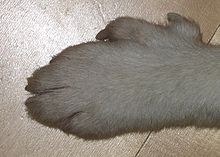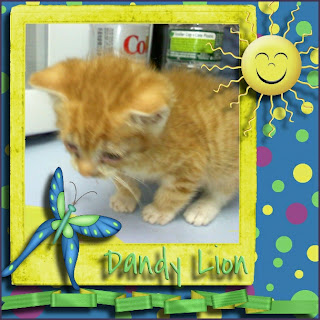Have you noticed that “cat guys” are everywhere these days? They’re turning up in funny YouTube videos and TV commercials. British animator Simon Tofield produces the very hilarious Simon’s Cat cartoons featuring a guy and his quirky kitty. A pet food company conducted a nationwide search for a cat correspondent, and chose a man from hundreds of thousands of applicants. A kitty-lovin’ man hosts the hit new series Must Love Cats on Animal Planet, and now their newest show – My Cat From Hell – features yet another “cat guy.” Apparently, real men do love cats, and they’re not afraid to admit it!
My Cat From Hell premiered on May 7. It showcases cat behaviorist Jackson Galaxy, who works with problem kitties and their owners to resolve serious issues that threaten to tear the family apart. From aggressive cats that scratch and bite, to skittish kitties that cower in fear, to curious cats prone to mischief and mayhem – Jackson has seen it all. In many cases, the families are on the verge of giving up their cats, and Jackson is their last hope. He uses his unique understanding of the feline mind to analyze their behavior, assess the situation and recommend some solutions.
I’ve watched three episodes, and I love everything about this show except the name. I hate the name because it implies that something is wrong with the cat. In reality, the bad behavior is nearly always a result of humans who just don’t understand feline nature. “We ask cats to co-exist with us in environments that don’t always support their natural instincts,” says Jackson. “I’ve devoted my life to teaching the cat’s eye view.”
 Once he educates the humans on why their cat acts a certain way, Jackson gives them specific things they need to change and voila, their cat’s behavior changes too! I have to admit, though, that watching the anti-cat boyfriend rant about his dislike of all things feline, I would have proposed a much simpler solution. Get rid of the boyfriend – problem solved!
Once he educates the humans on why their cat acts a certain way, Jackson gives them specific things they need to change and voila, their cat’s behavior changes too! I have to admit, though, that watching the anti-cat boyfriend rant about his dislike of all things feline, I would have proposed a much simpler solution. Get rid of the boyfriend – problem solved! Jackson believes that cats are either bush dwellers or tree dwellers by nature. And a tree dweller stuck at ground level leads to one very frustrated feline. The solution is easy: satisfy their natural instinct to seek higher ground by providing tall perches, shelves that lead to catwalks, and other vertical spaces.
Jackson has been called a cat whisperer, but says he doesn’t like that term because it suggests he can do something other people can’t. He prefers to be called a “cat listener” and believes that everyone has the ability to do what he does, if they just take the time to tune into their cat.
Jackson Galaxy has been working with cats for 16 years, including eight years in a high stress cat shelter in Colorado. (That’s not his real last name by the way. I know…shocker!) His mission is to reduce the number of cats that end up in shelters or abandoned on the streets for reasons that are entirely preventable. Educating cat owners one-on- one certainly has an impact, but having a television show enables him to reach infinitely more people.
I think Jackson’s knowledge of cats and his insight into their behavior could benefit even those who don’t have “problem cats” with severe behavioral issues. I’ve had cats all my life, and although I do know quite a bit about feline behavior, I still learned things from watching this show. Sadly, I read that the three episodes I watched are all there is. I certainly hope they do decide to renew the show, and I’m betting they will because My Cat From Hell has gotten lots of good press and positive feedback.
Read more articles by Julia Williams








































